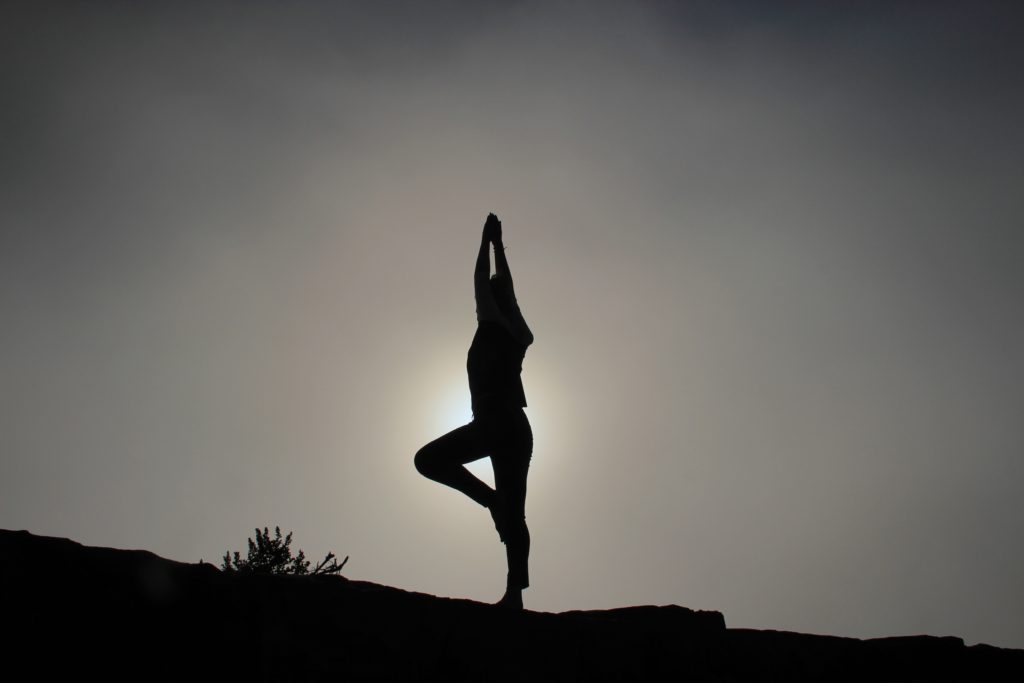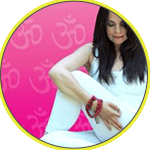
Finding a Heart Happy Yoga Class
Photo credit, via Take Back Your Health Conference
There seems to be yoga for just about everything and everyone these days, from yoga for you and your dog called DOGA, to SUP (Stand-Up Paddle) yoga done on a paddleboard on the water to hammock yoga done hanging from the ceiling. There is Hot Yoga, Flow Yoga, Tao yoga, Ying yoga, Power Yoga, and Restorative Yoga, just to name a few. Every month, it seems there is a new type of class or fusion of yoga styles that tout health, happiness, and a great workout. The important question is: “what yoga is right for me?”
The Ornish Program includes an internal practice of yoga that cultivates self-awareness and compassion
It’s important to note that many of the different styles of yoga focus predominantly on physical postures. However, traditional yoga was developed over thousands of years as a system for self-awareness that consists of eight limbs. Those branches combine practices for living in harmony with others and ourselves, as well as techniques to balance the body and master the mind. Incorporated in those teachings are practices that support health and well-being on all levels. The practices which focus on health, healing and well-being are the ones practiced in Ornish Lifestyle Medicine. (Intensive Cardiac Rehabilitation) The prescription for yoga practices include a daily practice of therapeutic postures, breathing techniques, relaxation, meditation and imagery.
Different Styles of Yoga Provide Different Things
If you are someone who is practicing yoga as a part of your healing path, the below styles of yoga will be best tailored for you. When practicing yoga to improve your heart health and manage your stress, the yoga practices that are most beneficial are ones that down regulate the sympathetic nervous system or the flight- or -fight response and up regulate the parasympathetic nervous system or the relaxation response. While some yoga focuses on a “good workout,” and this can be fun and invigorating, that is not the goal of yoga practiced in Ornish Lifestyle Medicine. While exercise is important for heart health, it is best not to use your yoga practice as a workout since the internal benefits can be lost in the process. It’s best to include both an internal practice of yoga that cultivates self-awareness and compassion with a separate exercise program.
There are some things to consider while practicing yoga with heart disease:
Let Your Breath Flow
During postures, don’t hold your breath. Your breath is your guide. If you are holding your breath, back off and move slower or pause and be still for a moment. Holding the breath increases blood pressure and puts undo strain on the heart.
Don’t Hold Your Arms Overhead in Poses
This forces the heart to work harder to pump “uphill” and can raise blood pressure and heart rate. Pressing the palms together at the heart center can be a nice alternative.
Move Slowly and Listen to Any Signs of Distress
Pay attention to discomfort such as pain, lightheadedness or other questionable sensations that arise. This can be a signal to modify what you are doing.
Adapt the Poses
No need to compete. Do poses in ways that suit you. There is no right way to do a pose, but there is a right way for you in the moment. All the poses are adaptable and will need some individual tweaking to fit.
Be Kind to Yourself
Don’t overdo it in poses by pushing yourself to do something a teacher wants you to do or something you think you should be able to do. Exercise compassion for your sweet self.
Start a Dialogue with the Teacher
In addition to knowing how to take care of yourself in a yoga class, choosing the right class for you and having a connection to the teacher is important. If you don’t feel a connection to the teacher, it may not be as fulfilling an experience for you. On the other hand, you may feel a great connection to the teacher, but the classes are not a fit for your specific needs or conditions. Remember a dialogue can be helpful in sorting out what class will be right for you.
Ornish-Friendly Yoga Classes to Look For:
(Note: not all classes will include the daily Ornish Stress Management prescription of the five basic techniques, so if you’re participating in Ornish Lifestyle Medicine, use these classes for inspiration and in addition to your regular daily home practice)
Meditation Classes
These generally don’t include postures, but they may include some breathing practice and relaxation. These can be very useful for maintaining a daily meditation practice and lend inspiration for regular practice.
Restorative Yoga
This is done using a lot of props and pillows to support staying in poses for a long time and with ease. These classes can provide a deep sense of relaxation. Your restorative yoga teacher will help you to find the right level of propping, just raise your hand and ask.
Gentle Hatha Yoga
This type uses slow gentle movements combined with relaxation, breathing, and often meditation. It is usually a well -rounded practice that can be easily adapted to those with heart disease. Talk to the teacher in advance to find out what poses will be taught and how you can modify them.
Integral Yoga
This type incorporates the five techniques we use in our Ornish Stress Management program, however there will still need to be some adapting to fit the needs of CVD, so make sure to have a conversation with your teacher about your health needs. Other styles that offer a similar style incorporating postures, breathing, relaxation and meditation are Sivananda Yoga, Ananda Yoga, Kripaulu Yoga, Himalayan Institute Yoga, and Mount Madonna Yoga. There are others that use these five techniques so make sure to mention the five techniques when inquiring about classes.
Yoga for Seniors
This is a class for older adults. There is often more consideration of limitations and modifications in these classes. Often the class is done slowly and incorporates poses that are supportive of balance, strength and flexibility.
Chair Yoga
This focuses on doing yoga postures in a chair due to certain limitations of standing or lying on the floor. There is often movement, breathing, and relaxation included, but ask your teacher what techniques he/she includes in the sessions.
Some Important Questions to Ask When Looking for a Class
Does your teacher have their 200 or 500 hour certification?
This insures the teachers have done a program in yoga training at the minimum of 200 or 500 hours of training and have some basic teaching skill.
How long has the teacher been teaching yoga?
The more experience the better. We encourage all yoga teachers who work with heart disease to have a minimum of 5 years of experience teaching and preferably with older adults and those with CVD.
Does the teacher work with heart patients and do they understand the specific needs of heart patients in a yoga classes?
If not, you could ask them if they recommend someone who does. You may also inquire about the techniques they you use in a class keeping in mind the five techniques mentioned above.
Do you include relaxation and meditation after the practice of postures?
Relaxation and meditation are highly restorative and balances the work of postures in classes. It’s a good question since many yoga classes don’t include either in the sessions.
Is the teacher trained in CPR?
This may or may not be important to you, but it does indicate whether the teachers are trained in emergency procedures around CVD. As you branch out and look for resources to support your daily yoga/stress management practice, keep this list handy but most of all listen to your own inner wisdom and trust yourself. If you leave class feeling lighter, easier, more peaceful and centered you are probably onto something.
What types of yoga classes have you found to make you feel the most heart happy?








